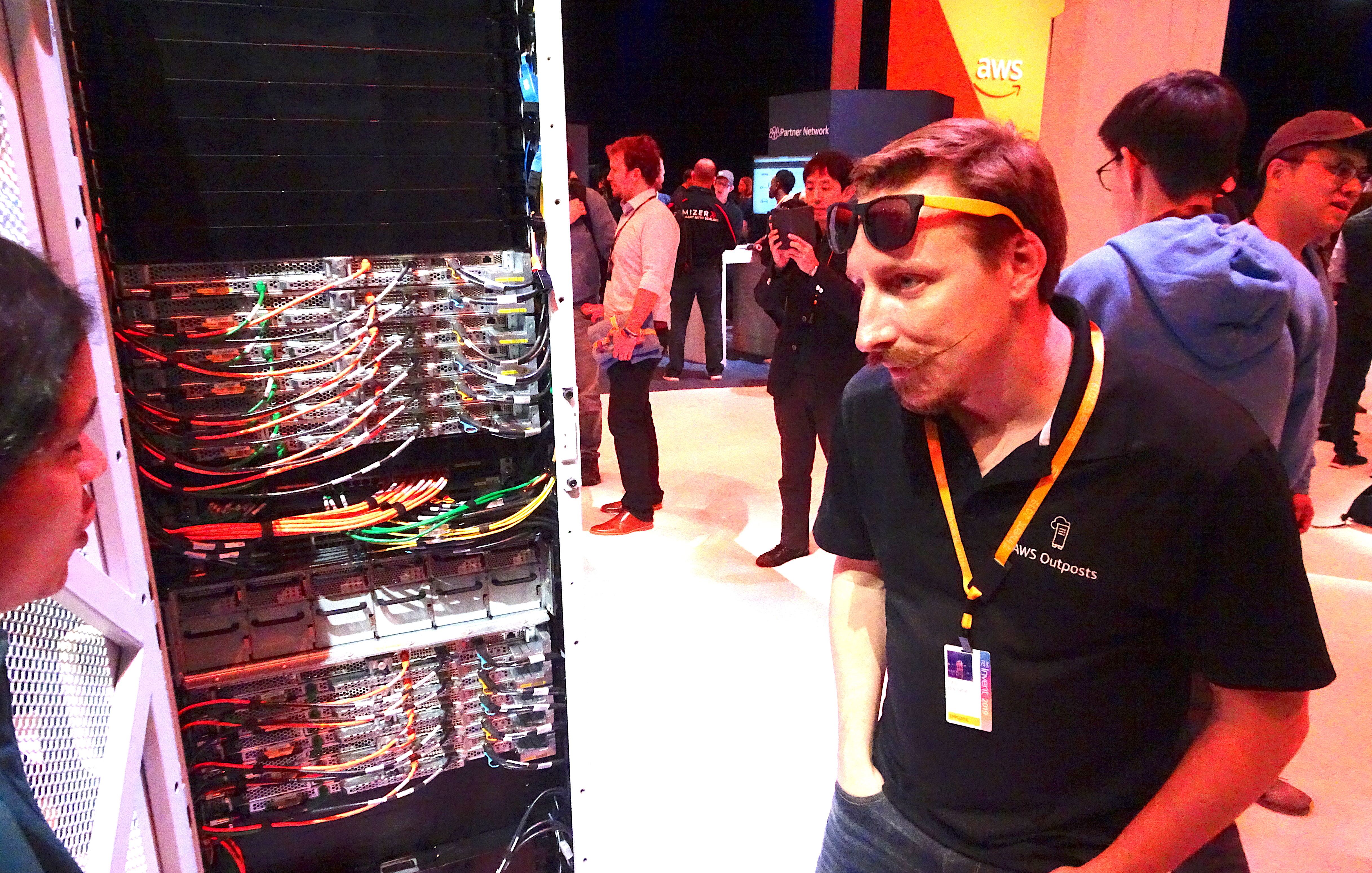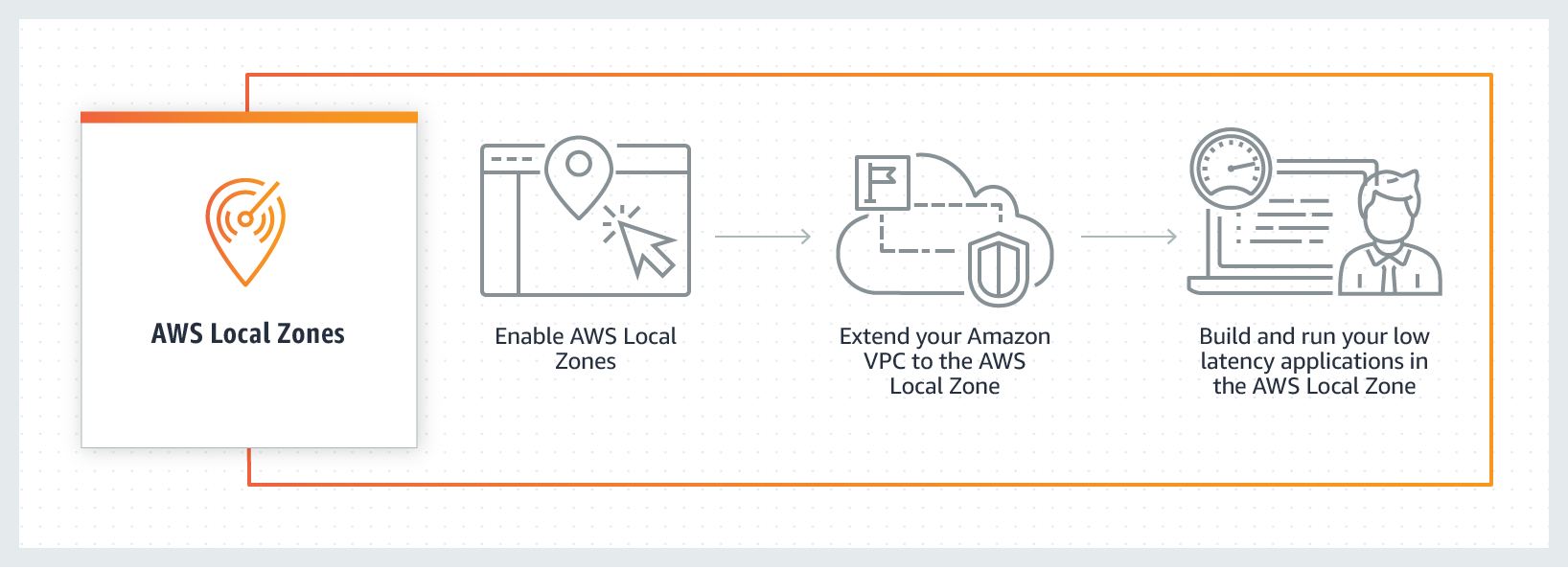 CLOUD
CLOUD
 CLOUD
CLOUD
 CLOUD
CLOUD
Amazon Web Services Inc. is looking to expand its cloud to the network edge with a new service called AWS Wavelength.
Wavelength makes AWS’ compute and storage services available at the edge of next-generation 5G cellular networks, enabling developers to build a new breed of apps that require low latency, such as machine learning inference at the edge.
In addition, AWS is partnering with Verizon Communications Inc. to make Wavelength available across the United States at the edge of Verizon’s 5G Ultra Wideband network. AWS is also working with other edge telecommunications companies such as Vodafone, SK Telecom and and KDDI to launch Wavelength across Europe, South Korea and Japan next year.
AWS Chief Executive Officer Andy Jassy and Verizon CEO Hans Vestberg joined onstage during a keynote at AWS’ re:Invent conference in Las Vegas this morning to talk about the potential to decentralized many services that currently are delivered only in the cloud. Use cases Wavelength should enable include augmented and virtual reality, the “internet of things,” smart cars and smart cities, and autonomous industrial equipment, Amazon said.
Jassy added that there has been lots of “hype and misunderstanding” about 5G but said the benefits for enterprises were clear. Vestberg, meanwhile, talked about the promise of 5G, specifically its ability to slice the network to create an isolated connection for individual applications.
The partnership will see AWS and Verizon integrate Wavelength with 5G edge in order to allow developers to start testing applications on “ultra-low latency networks,” the companies said. Those applications will then be able to access AWS’s core cloud services at the edge.

Amazon said initial deployments of Wavelength are planned for select customers in Chicago in early 2020, with additional locations to be added later that year.
The partnership is a big win for Verizon because it means more enterprise clients, while AWS gets a key network partner for its edge computing play. AWS may add more partners too, as Jassy explained there is an “abstraction layer” that will enable other telecommunications firms to participate later. Possible future partners include Vodafone Group Plc and KDDI Corp. and SK Telecom Co. Ltd., which work closely with AWS in Europe and Asia.
Just as important, perhaps, is that the collaboration helps AWS catch up with some of its cloud rivals that appear to be in front when it comes to edge computing. Microsoft Corp., for example, has a 5G network partner of its own, AT&T Inc., which it’s collaborating with on a similar service to AWS Wavelength, called Network Edge Compute.
Constellation Research Inc. analyst Holger Mueller told SiliconANGLE it was important to bring 5G to the edge because its speed enables a new generation of applications and a rethinking of their entire architecture. “Moving code closer to the data is always a good design principle and that’s what AWS and Verizon enable together,” he said. “It’s also a good strategic move by AWS claiming the space in Verizon’s data centers and offering new application architecture options to their customers.”
“Previous mobile edge cloud plays have failed with 4G and 3G, mainly because carriers were trying to do the work themselves and they weren’t very good at it,” said Patrick Moorhead, an analyst with Moor Insights & Strategy. “With AWS taking on some of that compute and storage at the edge with Wavelength, I believe it has a much higher chance of succeeding. Now we have to wait for the killer apps, which I think will likely be game streaming and augmented reality.”
In related news, AWS announced at re:Invent a new type of infrastructure deployment called AWS Local Zones, which provides lower latency connections by bringing core AWS services to a very specific geographic area. The very first AWS Local Zone will be in Los Angeles, available immediately, Amazon said.
AWS Local Zones are for customers that need the equivalent of on-premises access to services such as AWS compute, storage and database, but without actually running their own data centers.

“For some of our customers, they either don’t have an on-premises data center or want to get rid of their local data center, but still have a need for some of their workloads to run locally given latency requirements,” Peter DeSantis, vice president of AWS Global Infrastructure, explained in a statement.
Raj Pai, vice president of EC2 for AWS, said in an interview that Local Zones are a bit like a larger Availability Zone but farther away from the parent region. “It’s a new infrastructure deployment option for us,” he said, one that some customers have been asking for.
Amazon said the Los Angeles Local Zone is available via the US West (Oregon) region, and that additional Local Zones will be made available soon.
Finally, Amazon announced general availability of a key new service called AWS Outposts (pictured), which lets customers run the company’s cloud infrastructure services on-premises, in their own data centers. Announced last year, AWS Outposts is similar to Microsoft’s Azure Stack, letting users run AWS workloads from their own data centers with the same application programming interfaces, hardware and tools they use to connect to their other AWS applications. The service is designed to provide a “truly consistent hybrid experience,” Jassy said.
AWS Outposts is available in two flavors, namely Native AWS Outposts for those that want to use Amazon’s APIs and control plane, and VMware Cloud on AWS Outposts, for those who prefer to use the VMware control plane. The former is available now, while the VMware version will be available early next year.
With reporting from Robert Hof
THANK YOU